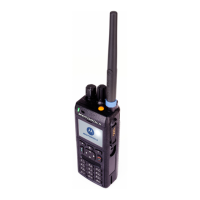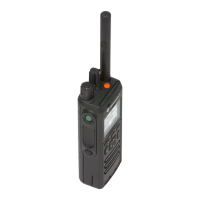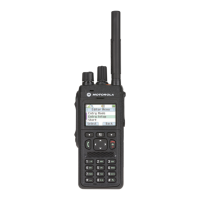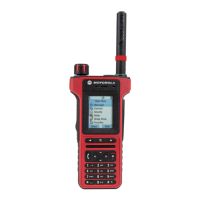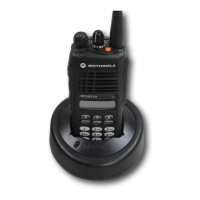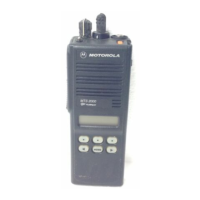OVERVIEW MTP700/MTP750 Portable Radios / Basic Service Manual 3-1
CHAPTER 3
OVERVIEW
General
The MTP700/MTP750 is Motorola’s latest and most advanced digital portable TETRA
radio. This radio generation is based on a new digital platform technology. It covers Trunk
Mode Operation (TMO) as well as Direct Mode Operation (DMO) and among other new
features it is supplied with extended code and operation memory capacity to support all
new market requirements. The TETRA radios ensure a high audio quality.
To achieve a high spectrum efficiency, the radio units use digital modulation technology
and sophisticated voice-compression algorithm. The voice of the person speaking into
the microphone is converted into a digital bit stream consisting of zeros (0) and ones (1).
This stream is then modulated into a radio-frequency (RF) signal, which is transmitted
over the air to another unit. This process is called digital modulation.
Digital Modulation Technology
The MTP700/MTP750 are 380-430 MHz or 806-870 MHz portable radios that can oper-
ate in dispatch mode. They use two digital technologies: Π/4 DQPSK and Time Division
Multiple Access (TDMA).
Π/4 DQPSK is a modulation technique that transmits information by altering the phase of
the radio frequency (RF) signal. Data is converted into complex symbols, which alter the
RF signal and transmit the information. When the signal is received, the change in phase
is converted back into symbols and then into the original data.
The TETRA system can accommodate 4-voice channels in the standard 25 kHz channel
as used in the two-way radio.
Time Division Multiple Access (TDMA) is used to allocate portions of the RF signal by
dividing time into four slots, one for each unit.
Time allocation enables each unit to transmit its voice information without interference
from other transmitting units. Transmission from a unit or base station is accommodated
in time-slot lengths of 14 milliseconds and frame lengths of 57 milliseconds. The TDMA
technique requires sophisticated algorithms and voice compressions/decompressions
(perform by digital-signal processor, DSP) and RF modulation/demodulation.
Voice Compression Technology
Voice is converted into a digital bit stream by sampling the voice at a high rate and con-
verting the samples into numbers, which are represented by bits.
Voice compression reduces the number of bits per second while maintaining the voice at
an acceptable quality level. The TETRA system uses a coding technique called ACELP
(Algebraic Code Excited Linear Prediction). The compressed voice-data bits modulate
the RF signal.

